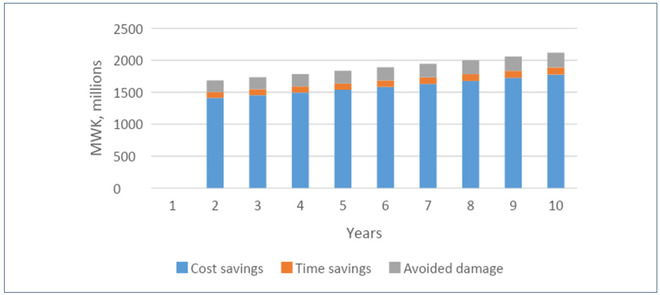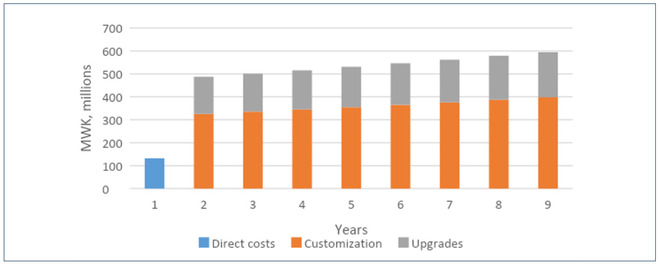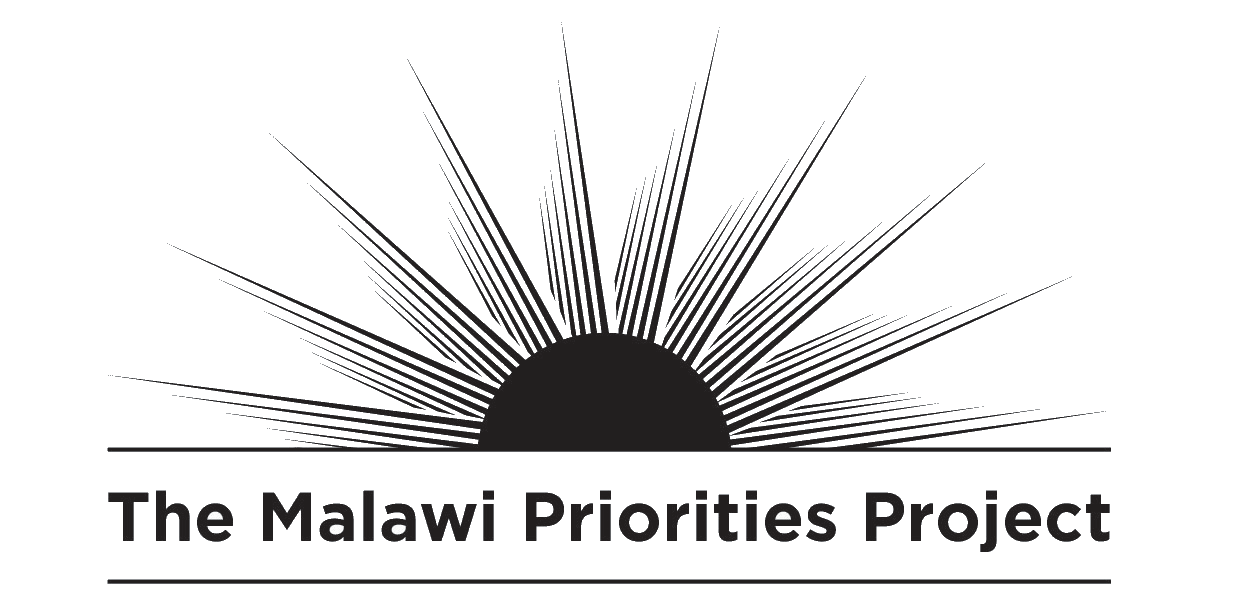Malawi Priorities: Land Compliance
Technical Report
Key Messages
 More than half of urban residents live in informal settlements or in informal dwellings in areas designated for housing. While regulations and housing permits are critical, compliance with these regulations is of equal importance.
More than half of urban residents live in informal settlements or in informal dwellings in areas designated for housing. While regulations and housing permits are critical, compliance with these regulations is of equal importance.- In the case of Malawi, if the costs or burdens associated with compliance are too high, non-compliance grows. Excessive costs of compliance can include inaccessible or highly-priced building materials; the cost of engaging the requisite experts (architects and engineers); and high time-costs associated with compliance. A high burden of compliance placed on owner-developers flows onto consumers, and can effectively price poorer communities out of the formal housing market, making informal settlements or dwellings the only available option. Guidance on lower-cost and sustainable building materials, which would be more appropriate for owner-developers who are targeting lower-income residents, further compounds this issue.
- Non-compliance in Malawi’s construction sector is rooted in three challenges: poverty; the costs of compliance imposed on the private sector; and, a lack of transparency in the permit-provision process. The proposed interventions reduce the costs of building low-income housing: they create access to architectural plans that make houses more resilient; they reduce the direct cost of the construction permit process and they reduce the time associated with engaging with public entities.
The first intervention focuses on making prototype plans available for owner-builders with a view to substantially reduce the cost of architectural plans at the approval stage of the construction permit process. This intervention alone would yield 3.3 kwacha for every kwacha invested. The benefits principally accrue to the private sector in the form of avoided technical consultation costs and time saved, as well as avoided damage of sub-quality housing. Part of these benefits would flow to consumers and homeowners, primarily in the form of lowered housing costs and avoided costs associated with repairs over the longer term.
- The second intervention is the integration of ICT in the construction permit process, or e-permits, which would improve local council productivity and workflow and render the process more transparent, which yields 3.2 kwacha for every kwacha invested. The benefits of this intervention are primarily expressed in time saved from reduced transaction costs and shorter waiting times.
Context
Nationally, Malawians struggle with informal dwellings and a high number of informal settlements, leaving 33% of the population vulnerable to flooding and other climatic risks. Houses built with traditional materials are particularly vulnerable to damage and exist in both designated and undesignated areas for building. The proportion of permanent or semi-permanent dwellings also varies greatly across the nation, from Mangochi, where 45% live in traditional homes to Mzuzu City, wherein only 6.6% live in traditional houses (Government of Malawi, 2019b).
Given Malawi’s ecological zone and associated climatic risks, the threat posed by vulnerable housing becomes a more urgent challenge. Nationally, there have been 19 major flooding incidents over the past 50 years (Government of Malawi, 2019). The 2019 Post Disaster Needs Assessment found that 89% of the affected houses were constructed of traditional materials.
Within the present infrastructure, owner-developers of low-income housing face several challenges in meeting the requirements of the construction permit process. The dearth of accredited experts, the cost of consulting them, and the time and resources required to coordinate with government officials effectively create a ‘barrier’ to comply with building regulations. Consequently, the cost of compliance renders the construction permit process so expensive, that a significant percentage of houses are constructed with traditional materials, even in areas designated for housing construction.
Obtaining a construction permit in Malawi entails 13 procedures and begins with getting the architectural plans approved. Albeit straightforward, this process demands significant monetary and time costs. Among these 13 components, the most expensive component by far is the approval of the architectural plan. Where it relates to time, approval of the architectural plan from the local council takes 60 days, whereas the total time to obtain a construction permit is 172 days. The plans approval process alone takes up approximately 78% (MWK 941,000), of the total cost of obtaining a construction permit (MWK 1.2 million) (2020 Doing Business Survey).
Intervention 1: The use of prototype plans for housing
The intervention proposed is to make use of prototypes (pre-approved architectural plans) to reduce the financial cost and time of the plans approval process. The intervention suggests that local councils are expected to have 5 prototype plans, upon which owner-developers may customize. Customization takes 5 working days and is estimated to cost 15% of the current cost of the plan's approval process. Local councils are also expected to review prototype plans every 10 years. The focus of this intervention is owner-developers in areas designated for building as the analysis assumes no changes or special dispensations for those buildings in
The benefits of prototype plans include the time and avoided expenses of engaging architects and engineers directly to create an original architectural plan. This accrues to the owner-developers of permanent housing, approximately 1500 houses in the first year, increasing to 1900 over ten years. These figures assume a conservative uptake rate of prototype plans equal to 10% of new construction. The cost savings is substantial, as the intervention reduces the costs associated with developing individual architectural plans by 84%.
The 2020 Doing Business Survey estimates that the plan's approval phase takes, on average, 60 days in Malawi. The time savings thus range from 90,000 to 113,000 days annually over the intervention period, valued at MWK 90 million in the first year, increasing to MWK 113 million in year 10.
Finally, improved housing quality reduces the risk of housing loss/ damage due to floods or earthquakes. This benefit accrues to those owner-developers, who would have otherwise constructed traditional-type dwellings, which are non-resistant to disaster, floods especially. The total avoided damage from floods is valued at MWK 183.6 million (600 traditional houses damaged or lost) in Year 1, increasing to MWK 230.7 million (710 traditional houses damaged or lost) in Year 10.
The costs of the intervention include the direct cost of developing prototype plans (MWK 131.7 million) and the cost of customizing them (MWK 325.9 million in Year 2 increasing to MWK 409.6 million in Year 10). There is also the additional cost of construction. All things being equal, a dwelling that is disaster-resistant and meets building regulations is more expensive than a house built of traditional materials. The upgrades are valued at MWK 161.6 million in Year 1, increasing to MWK 203.1 million in Year 10. Customization and upgrade costs increase in proportion to housing demand.
Overall, costs and benefits together result in 3.3 kwacha of benefit for every kwacha invested. The use of prototype plans, in particular, encourages those, who could not afford architectural fees, to submit customized but pre-approved plans for approval, putting up structures that are properly guided. Although the intervention is specified for housing construction, prototype plans could be used for other building types, such as schools and business centers.
Figure 1: Prototype plan, benefits

Figure 2: Prototype plan, costs

Intervention 2: E-permits
Doing Business 2020 data show that, on average, it takes 172 days to complete the Construction Permit Process in Malawi, with no digital features. Tackling time costs and bureaucratic inefficiencies within the Construction Permit Process would contribute to a decrease in building costs, primarily expressed in time costs, and thus an increase in compliance. When more than 5 digital features are available, this time decreases by 32 percent, to an average of 114 days. That is, the availability of digital features is associated with less time. The five most common functions of e-permitting systems are online applications for construction/demolition with the capability of uploading plans; on- line plan reviews; access to the system by multiple authorities; data exchange between government agencies, and online fee payments (World Bank, 2018).
For the purposes of this analysis, principally because of the absence of a pilot in Malawi, the sole benefit measured is the reduction in time to complete the construction permit process. It is assumed that the uptake rate is 35%; this is the proportion of future owner-developers who will use the digitized services offered. Benefits accrue over a five-year period, after which replacement of capital equipment, license renewals, etc. are required. Time savings (in days) begin at 491,000 in Year 4 of the intervention and terminate at 551,000 in year 8.
The benefit is valued by using a proxy for willingness to expedite the construction permit approvals process, MWK 1000 per day. Thus, the total willingness to pay is MWK 2,604 million over five years. The cost of rolling out the e-permits process is assumed to be MWK 553 million, the high end of costs from international experience from Africa and Latin America. The high-end value was chosen due to the low internet penetration and the higher-than-average number of days to obtain a construction permit. It is further assumed that the Government of Malawi rolls out the intervention nationally, over 3 years and that the costs are evenly incurred during that time. E-permitting reduces transaction time and cost, generating 3.2 kwacha for each kwacha invested. It also renders the construction permit application system more transparent, fostering confidence in the process.
Summary Table
| Intervention | BCR | Costs | Benefits |
|---|---|---|---|
| Prototype plans | 3.3 Fair (100% economic benefits) |
MWK 3,506 million Total costs including: MWK 131.7 million over 10 years (Cost to local councils for development of prototype plans Customization and housing upgrades are private costs. |
MWK 14,287 million over 10 years (Avoided cost of architectural plans) MWK 911 million over 10 years (Time Savings); MWK 1857 million over 10 years (Reduced risk of housing damage) |
| E-permits | 3.2 Fair (100% economic benefits) |
MWK 553 million (National roll out over a 3-year period) | MWK 1,775 million over five years, beginning in Year 4 (Time saved from eliminated waiting time, and reduced human interactions) |
Note: BCRs are based on costs and benefits discounted at 8% (see accompanying technical report). BCR ratings are determined on the following scale Excellent, BCR > 15; Good, BCR 5-15; Fair, BCR 1-5; Poor, BCR < 1. This traffic light scale was developed by an Eminent Panel including several Nobel Laureate economists for a previous Copenhagen Consensus project that assessed the Sustainable Development Goals.
Download the full policy brief here.

